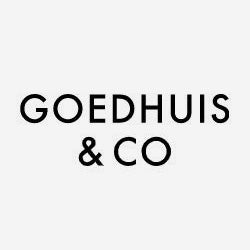
Last Tuesday, we were lucky enough to have a special visit from Helmut Donnhoff, the master winemaker from the Nahe Valley in Germany.
Helmut is considered amongst the top tier of winegrowers in Germany making him equivalent of the likes of Rousseau or de Vogüé in Burgundy. Unbelievably modest yet also wonderfully charming, he came to present seven of his wines to the team including a 1989 Spätlese from the Grand Cru vineyard, Hermannshöhle.
The history of German wine in the UK has been an unusual one. It was adored by Queen Victoria who supposedly passed her holidays in Hochheim. In the 19th century at the height of its prestige, it even commanded prices greater than First Growth Bordeaux. From the 1950s to the 1970s all of that changed when unscrupulous people began producing flavourless wine from high yielding vines (which contained little or no Riesling) and selling it under “˜brands’ that were easily confused with the top vineyards and producers. Demand for these Germanic beauties died as a result.
Fortunately for oenophiles, the great growers never stopped producing exceptional wines and over the past few years, interest for these delicate yet intense wines are on the rise in a serious way. Particularly, Donnhoff’s which are super pure, intensely focused and beautifully complex.
Donnhoff is known for both dry and fruity-styled wines, though his drier styles have become more in demand in recent years, particularly in restaurants. He presented a fine spectrum of these styles:
Pinot Gris Dry 2007 – An unusual wine for Helmut which is not made from Riesling. It displayed attractive yeasty characteristics with dried peaches and pronounced minerality. It had more umph than most Italian versions and lots more finesse than the French ones.
Hermannshöhle Grosses Gëwachs Dry (“˜Grand Cru’) 2006 – An amazing wine on the nose with notes of peach iced tea and white grapes. Powerful yet super elegant on the palate. Very impressive.
Oberhäuser Leistenberg Kabinett 2007 – Always a pleaser, his Kabinett was tender and soft with juicy fruit and a slately tang. Unbelievably easy to drink, particularly at only 8.5% alcohol.
Norheimer Kirschheck Spätlese 2007 – Considered Helmut’s “˜entry level’ Spätlese, this wine is named after the local cherry hedges. Fascinating enough, it actually tasted of cherries as well with crunchy minerality and peach. Super svelte.
Oberhäuser Brücke Spätlese 2007 – Produced from the monopole vineyard across the stream behind Helmut’s house, the 2007displaying exceptional concentration with notes of yellow plum, mandarin orange and mineral zest. Very striking.
Niederhauser Hermannshöhle Spätlese 1989 – a classic German Spätlese which displayed lots of the ubiquitous petrol character for which Riesling is so well known. Yet after a minute of swirling, it opened up to reveal beautiful floral characters with subtle tarragon and peach. A delicious and interesting wine.
Niederhäuser Hermannshöhle Auslese Gold Capsule 2006 – Recently scored 99 points by The Wine Advocate, we were quite keen to re-taste this beauty. We were not disappointed. Intense with lush peach, apricot, honey and wild sage this “˜sticky’ offered loads of glycerol yet with incredible lightness. Far better than most Sauternes out there and much lighter in alcohol.
It was with a heavy heart when we had to say goodbye to our Teutonic friend. Nonetheless, we are looking to highlight our German growers in the coming year with small, specialised dinners that exemplify their extraordinary terroir. Ernie Loosen is pencilled in for the spring while Helmut Donnhoff will present his wines a while later. Mark your calendars now!

 Written By
Written By